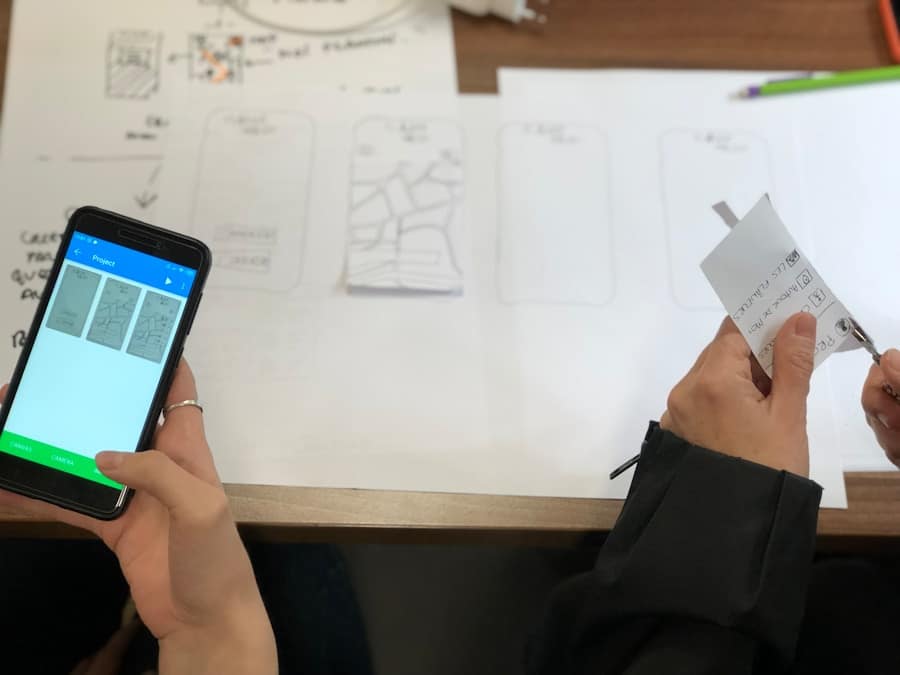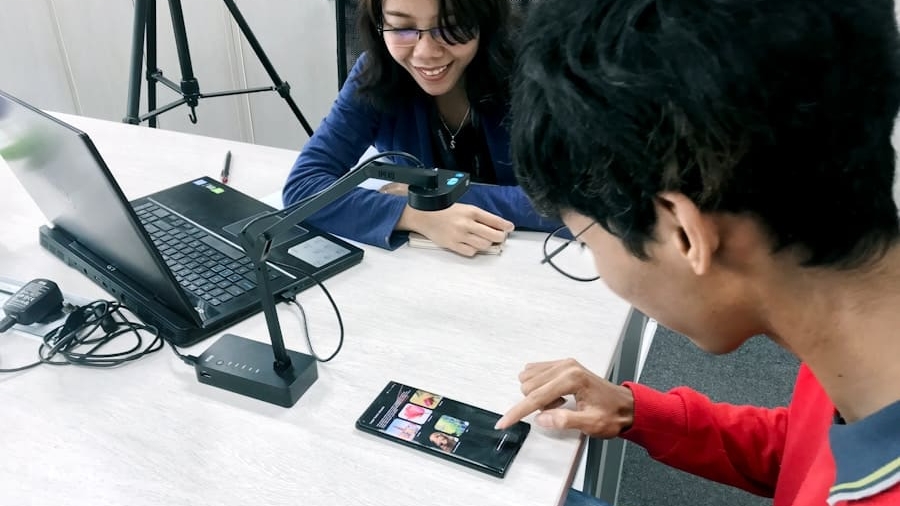Augmented Reality (AR) is a transformative technology that overlays digital information onto the real world, enhancing the user’s perception and interaction with their environment. Unlike Virtual Reality (VR), which immerses users in a completely digital realm, AR enriches the physical world by integrating computer-generated elements such as images, sounds, and other sensory stimuli. This technology has gained traction across various sectors, including gaming, healthcare, and education, due to its ability to create engaging and interactive experiences.
The rise of mobile devices equipped with advanced cameras and sensors has further propelled the accessibility and application of AR, making it a viable tool for enhancing learning experiences. In the educational landscape, AR offers innovative ways to present information and engage students. By providing interactive visualizations of complex concepts, AR can cater to diverse learning styles and needs.
This is particularly significant in special education, where traditional teaching methods may not effectively address the unique challenges faced by students with learning disabilities. As educators seek to create inclusive environments that foster understanding and retention, AR emerges as a promising solution that can bridge gaps in comprehension and engagement.
Key Takeaways
- Augmented Reality (AR) is a technology that superimposes digital information onto the real world, enhancing the user’s perception and interaction with their environment.
- Students with learning disabilities often struggle with grasping abstract concepts, making traditional teaching methods less effective for them.
- AR has the potential to revolutionize education by providing interactive and immersive learning experiences for students with learning disabilities.
- AR helps students with learning disabilities by providing visual and interactive representations of abstract concepts, making learning more engaging and understandable for them.
- Case studies and success stories have shown that AR implementation in special education programs has led to improved learning outcomes and increased student engagement.
Understanding Learning Disabilities and Abstract Concepts
Learning disabilities encompass a range of neurological conditions that affect how individuals process information. These disabilities can manifest in various forms, including dyslexia, dyscalculia, and attention deficit hyperactivity disorder (ADHD), each presenting unique challenges in learning environments. Students with learning disabilities often struggle with tasks that require reading, writing, or mathematical skills, which can hinder their academic performance and self-esteem.
Understanding these disabilities is crucial for educators aiming to provide effective support and create tailored learning experiences. One of the significant hurdles for students with learning disabilities is grasping abstract concepts. Abstract thinking involves the ability to understand ideas that are not directly tied to concrete objects or experiences.
For instance, mathematical concepts such as fractions or algebraic equations can be particularly challenging for students who struggle with visualizing these ideas in a tangible way. Traditional teaching methods often rely on verbal explanations or written instructions, which may not resonate with all learners. Consequently, educators must explore alternative approaches that facilitate comprehension and retention of abstract concepts, ensuring that all students have the opportunity to succeed academically.
The Role of AR in Education

The integration of Augmented Reality into educational settings has the potential to revolutionize how information is presented and absorbed.
How AR Helps Students with Learning Disabilities Grasp Abstract Concepts
Augmented Reality serves as a powerful tool for helping students with learning disabilities understand abstract concepts by providing visual and interactive representations of ideas that might otherwise seem intangible. For instance, when teaching mathematical concepts like geometry, AR applications can allow students to manipulate 3D shapes in real-time, enabling them to visualize relationships between different figures. This tactile engagement can significantly enhance comprehension for students who struggle with traditional methods of instruction.
Additionally, AR can break down complex ideas into smaller, more manageable components. For example, when exploring historical events or scientific phenomena, AR can present information in layers, allowing students to gradually uncover details at their own pace. This step-by-step approach not only reduces cognitive overload but also empowers students to take ownership of their learning journey.
By interacting with content in a dynamic way, students are more likely to retain information and develop a deeper understanding of abstract concepts.
Case Studies and Success Stories of AR Implementation
Numerous case studies illustrate the successful implementation of Augmented Reality in educational settings, particularly for students with learning disabilities. One notable example is the use of AR in teaching mathematics to students with dyscalculia. In a pilot program conducted at a special education school, educators utilized AR applications that allowed students to visualize mathematical operations through interactive simulations.
The results were promising; students demonstrated improved problem-solving skills and increased confidence in their mathematical abilities. Another compelling case study involved the use of AR in teaching science concepts to students with ADHD. In this program, educators employed AR tools that enabled students to explore biological processes through immersive experiences.
For instance, students could observe the life cycle of a butterfly by interacting with 3D models that illustrated each stage of development. Feedback from both students and teachers indicated heightened engagement levels and a greater understanding of scientific principles compared to traditional teaching methods.
Challenges and Limitations of AR in Supporting Students with Learning Disabilities

Despite its potential benefits, the integration of Augmented Reality into educational settings is not without challenges. One significant limitation is the accessibility of technology; not all schools have the necessary resources or infrastructure to implement AR effectively. This disparity can create inequities in educational opportunities for students with learning disabilities, particularly in underfunded districts where access to technology may be limited.
Moreover, there is a learning curve associated with using AR tools for both educators and students. Teachers must be adequately trained to integrate AR into their lesson plans effectively, which requires time and professional development resources. Additionally, some students may experience difficulties adapting to new technologies or may become overwhelmed by the sensory input provided by AR applications.
It is essential for educators to consider these factors when implementing AR solutions and to provide appropriate support to ensure all students can benefit from this innovative approach.
Best Practices for Integrating AR into Special Education Programs
To maximize the effectiveness of Augmented Reality in special education programs, several best practices should be considered. First and foremost, collaboration among educators, special education professionals, and technology experts is crucial for developing tailored AR applications that meet the specific needs of students with learning disabilities. By working together, these stakeholders can create content that aligns with curriculum standards while also addressing individual learning challenges.
Additionally, it is essential to involve students in the process of selecting and using AR tools. By soliciting feedback from learners about their preferences and experiences with different applications, educators can make informed decisions about which technologies will be most effective in promoting engagement and understanding. Furthermore, providing opportunities for hands-on exploration and experimentation with AR tools can empower students to take an active role in their learning.
Future Implications and Potential of AR in Special Education
The future implications of Augmented Reality in special education are vast and promising. As technology continues to evolve, we can expect more sophisticated AR applications that offer even greater interactivity and personalization for learners with disabilities. Advances in artificial intelligence may enable adaptive learning systems that respond dynamically to individual student needs, providing real-time feedback and support tailored to each learner’s unique challenges.
Moreover, as awareness of learning disabilities grows within educational communities, there will likely be an increased demand for innovative solutions like AR that promote inclusivity and accessibility. This shift could lead to more funding opportunities for schools seeking to implement cutting-edge technologies in their classrooms. Ultimately, the potential of Augmented Reality extends beyond mere engagement; it represents a paradigm shift in how we approach education for all learners, particularly those who face barriers due to learning disabilities.
By harnessing the power of AR, educators can create enriching environments that foster understanding, creativity, and success for every student.
A related article discussing the advancements in technology is com/tesla-refutes-elon-musks-timeline-on-full-self-driving/’>Tesla Refutes Elon Musk’s Timeline on Full Self-Driving.
Just like how AR is revolutionizing education for students with learning disabilities, Tesla’s self-driving technology is pushing the boundaries of what is possible in the automotive industry. Both articles highlight the power of technology to improve our lives and expand our understanding of complex concepts.
FAQs
What is AR?
AR stands for Augmented Reality, which is a technology that superimposes a computer-generated image on a user’s view of the real world, thus providing a composite view.
How is AR helping students with learning disabilities?
AR is helping students with learning disabilities by providing a visual and interactive way to grasp abstract concepts. It can create 3D models and simulations that make complex ideas more tangible and easier to understand.
What are some examples of how AR is being used in education for students with learning disabilities?
Some examples of how AR is being used in education for students with learning disabilities include creating interactive models of scientific concepts, providing virtual tours of historical sites, and offering immersive language learning experiences.
What are the benefits of using AR for students with learning disabilities?
The benefits of using AR for students with learning disabilities include increased engagement, improved understanding of abstract concepts, and personalized learning experiences that cater to individual learning styles.
Are there any challenges or limitations to using AR for students with learning disabilities?
Some challenges or limitations to using AR for students with learning disabilities include the need for access to AR technology, potential sensory overload for some students, and the requirement for proper training and support for educators.

